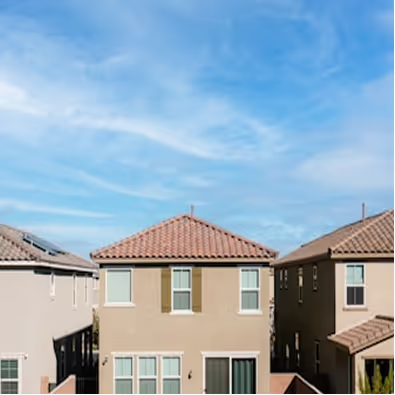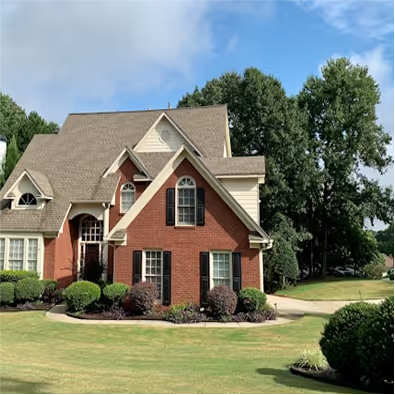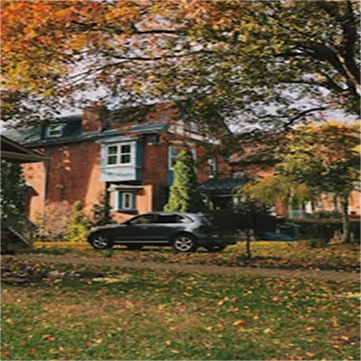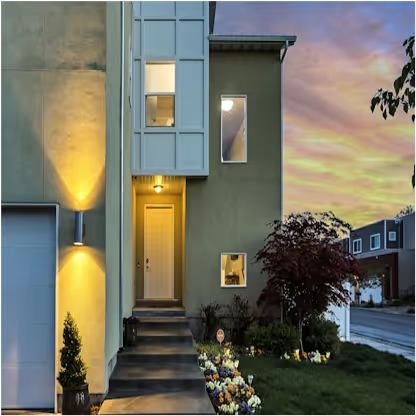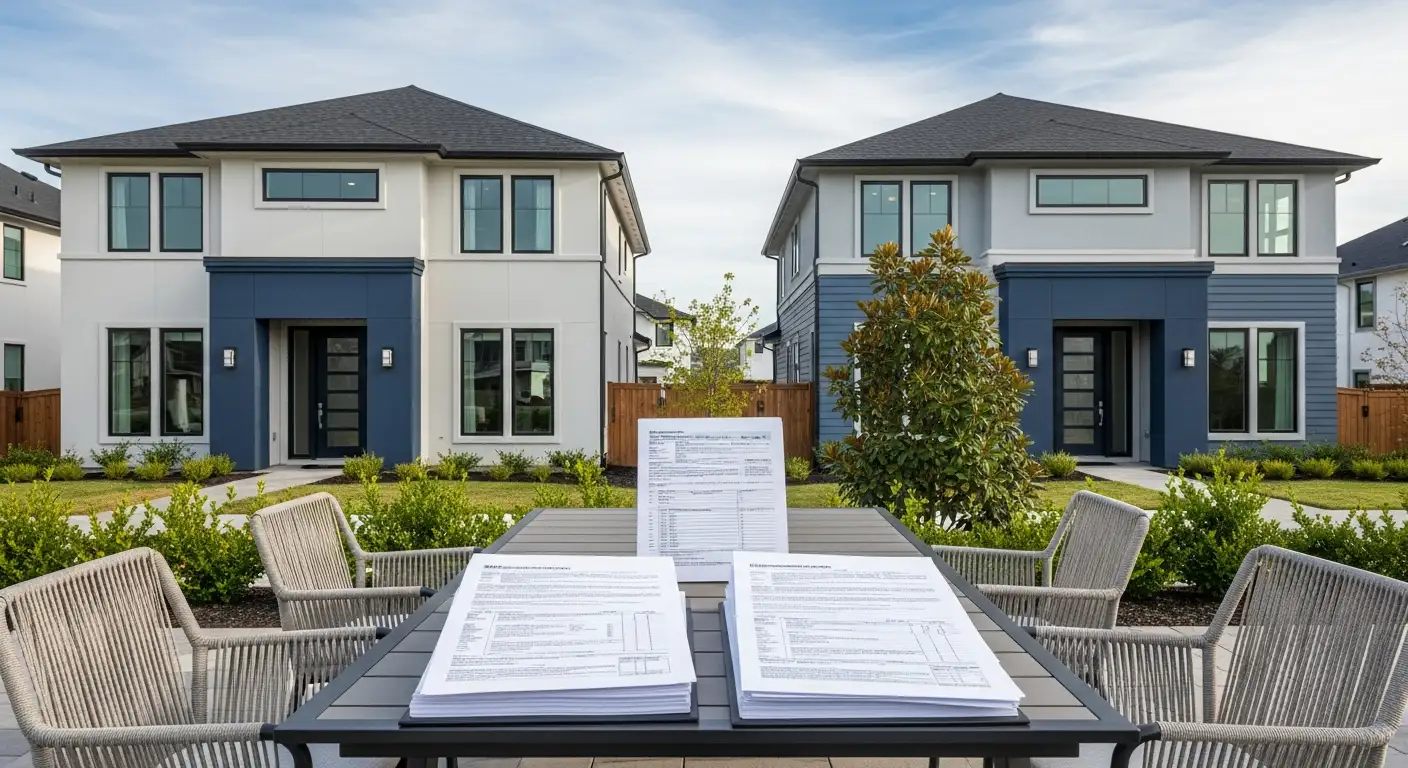Navigating Renovation Financing
Buying a fixer upper can be a rewarding investment, offering homeowners the chance to customize their living space and build equity. However, financing these projects involves unique challenges and opportunities. Specialized mortgage products designed specifically for fixer uppers streamline the purchase and renovation process, consolidating costs and enabling borrowers to transform run-down properties into dream homes. This article explores the range of renovation loan options available, the role of mortgage brokers and residential lenders, and practical guidance to successfully finance your home improvement journey.
Understanding Mortgage Brokerage Services

What are mortgage brokerage services?
Mortgage brokerage services involve acting as intermediaries between homebuyers and lenders to find the most suitable mortgage loans. Brokers assess borrowers' financial situations, gather necessary documentation, and compare loan options, including specialized renovation loans not always available directly through lenders. They save time by navigating complex mortgage markets and facilitating preapproval and application steps, often securing competitive rates and exclusive offers.
How do mortgage brokers assist with renovation loans?
Mortgage brokers help borrowers identify which renovation loan options—such as Fannie Mae HomeStyle, FHA 203(k), VA renovation loans, or USDA renovation loans—best fit their financial profile and renovation goals. They guide applicants through document collection (e.g., purchase agreements, pay stubs, W2s, tax returns, ID) and explain loan features like fixed interest rates, interest-only payments during construction, and down payment requirements. Brokers also coordinate with lenders to consolidate construction and renovation costs into one seamless loan, simplifying the process with single closings.
What are the benefits of using a mortgage broker for fixer-upper financing?
Using a mortgage broker streamlines the often complex process of securing financing for fixer-uppers. Brokers provide expert advice on various loan products, help maximize loan-to-value ratios, and can negotiate more favorable terms. This support reduces the risk of costly delays or surprises during renovation financing. Additionally, brokers can help evaluate the total renovation budget and navigate nuances such as tax deductions on interest payments or eligibility criteria for specialized loans like VA or USDA renovation mortgages.
Working with a mortgage broker ultimately offers a more tailored, efficient, and informed path toward financing and renovating your new home.
How Residential Lending Services Facilitate Home Renovation Financing

How do residential lending services work?
Residential lending services play a crucial role in enabling homeowners and buyers to finance the purchase or refinance of homes, especially those needing renovations or significant repairs. These services begin by evaluating loan applications—reviewing documents like income statements, tax returns, and property purchase agreements—to assess creditworthiness and determine eligibility.
Once approved, they provide the loan funds, often consolidating purchase and renovation costs into a single mortgage. This streamlined approach simplifies the process for borrowers who are buying fixer-uppers or updating existing properties.
Process of residential lending
The lending process typically starts with preapproval, helping buyers understand their budget before house shopping. After selecting a property, a thorough inspection and detailed repair estimates guide the renovation loan application. Lenders then coordinate appraisals based on the home's anticipated value after improvements, ensuring the loan amount appropriately covers both purchase and renovation costs.
Construction funds are disbursed in phases, with loan servicing managing payments, escrow accounts, and interest collection. Services may offer fixed or adjustable interest rates and interest-only payments during construction to ease financial pressure.
Loan origination and servicing
Loan origination involves processing the initial application, document verification, underwriting, and final approval. For renovation loans, additional steps include evaluating renovation budgets and coordinating with contractors or inspectors. Loan servicing continues after closing by managing regular payment collection and overseeing the renovation fund's disbursement to ensure funds are used properly.
Role in fixer upper purchase and renovation
Residential lending services are vital for buyers of fixer-upper properties. They offer specialized renovation loans that combine the home’s purchase price and renovation budget into one loan, reducing the complexity compared to separate loans.
These loans, such as the Fannie Mae HomeStyle Renovation, FHA 203(k), and VA renovation loans, cater to various borrower needs with flexible down payments, credit requirements, and renovation types.
By managing all aspects of financing and fund allocation, residential lenders help ensure successful home renovation projects, making homeownership attainable for many who want to create customized living spaces or increase property value.
Specialized Mortgage Products for Fixer Uppers: An Overview

Types of Renovation Loans
Several renovation loan types cater specifically to fixer-uppers, each designed to streamline both purchase and remodeling financing. Examples include:
- Fannie Mae HomeStyle Renovation Loan: Allows financing for both primary residences and investment properties, with the purchase and renovation rolled into a single loan. It permits borrowing up to 97% of the combined cost with a minimum credit score of 620.
- FHA 203(k) Loan: Suitable for larger or complex renovations, requiring a low down payment of 3.5%. It comes in two variations: Standard 203(k) for major repairs and Limited 203(k) for smaller, cosmetic work.
- Freddie Mac CHOICERenovation & CHOICEReno eXPress: These loans provide funding based on either purchase plus renovation costs or post-renovation value. The eXPress version targets smaller renovations capped at 10-15% of the home value.
- VA Renovation Loan: Available to eligible veterans and active service members, offering 100% financing based on post-renovation value without ongoing mortgage insurance.
- USDA Renovation Loan: Focuses on rural properties for low-income applicants, requiring no down payment and allowing for energy-efficient upgrades and adaptations.
Single-Close Loans vs. Multiple Loans
Single-closing renovation mortgages combine the purchase price and renovation costs into one loan with one settlement process. This approach:
- Saves time and money by eliminating a second closing.
- Simplifies finances by consolidating payments.
In contrast, multiple-loan approaches require separate funding for the home purchase and the renovation, which can increase costs and complexity.
Loan Features Suited for Fixers
Renovation loans tailored for fixer-uppers often include:
- Fixed interest rates during construction to protect borrowers from rate fluctuations.
- Interest-only payments up to 12 months to ease cash flow during renovations.
- Multiple rate options, including fixed and adjustable rates.
- Low down payment requirements, sometimes as low as 0% or 3.5%.
- Suitability for owner-occupied and second homes, expanding borrower eligibility.
These features combine to offer flexible, cost-effective financing that facilitates both purchasing and improving homes needing work.
Fannie Mae HomeStyle Renovation Loan: Flexible Financing for Buyers and Investors

Loan details and eligibility
The Fannie Mae HomeStyle Renovation loan is designed to finance both the purchase and renovation of a property in a single loan. This flexibility supports a wide range of projects, from minor updates to extensive remodeling. It caters to borrowers who want to buy homes that need improvement and renovate them according to their preferences.
Funding primary and investment properties
Unlike some renovation loans limited to primary residences, the HomeStyle Renovation loan allows financing for both primary homes and investment properties. This makes it a versatile option for homeowners looking to update their living space as well as investors aiming to improve rental properties.
Down payment and credit score requirements
Borrowers can finance up to 97% of the combined purchase price and renovation costs, making the loan accessible with a relatively low down payment. The minimum credit score requirement is typically 620, balancing accessibility with lender risk management. This range accommodates a variety of credit profiles while enabling substantial borrowing for home improvement projects.
FHA 203(k) and VA Renovation Loans: Government-Backed Options for Renovation

What types of FHA 203(k) loans are available, and what are their requirements?
The FHA 203(k) loan program offers two main types tailored to renovation needs. The Standard 203(k) loan covers major and structural repairs, ideal for extensive remodeling projects, while the Limited 203(k) loan is designed for smaller, non-structural upgrades like flooring or appliance replacements. One of the program’s advantages is the low down payment requirement of just 3.5%, making it accessible for many buyers. To qualify, applicants generally need a minimum credit score around 580.
What benefits does the VA renovation loan provide to veterans?
VA renovation loans are specifically designed for eligible veterans and active service members. These loans allow financing up to 100% of the home's expected value after renovations without requiring a down payment. An added benefit is the absence of ongoing mortgage insurance fees, significantly reducing the cost of homeownership. However, VA renovation loans are restricted to primary residences only and require that borrowers meet lender-specific credit standards, commonly a minimum score near 620.
What should borrowers consider regarding down payments and insurance?
While FHA 203(k) loans require a modest 3.5% down payment, VA renovation loans typically require no down payment at all. An important consideration for FHA loans is the mortgage insurance premium, which borrowers must pay, unlike VA loans that waive this fee. Interest on both loans may also be tax deductible, but it’s advisable to consult a tax professional for personalized guidance.
These government-backed renovation loans provide flexible and affordable financing options for purchasers looking to renovate homes, helping veterans and regular buyers alike to improve their properties with manageable upfront costs and supportive loan features.
Freddie Mac CHOICERenovation and CHOICEReno eXPress Loans: Streamlined Renovation Financing

Loan criteria and credit score requirements
Freddie Mac offers two key renovation loan programs tailored to different needs: the CHOICERenovation and the CHOICEReno eXPress loans. Both require a minimum credit score of 660, ensuring borrowers have a solid credit background to qualify. These requirements help streamline the approval process for borrowers with decent financial standing.
Scope of renovations funded
The CHOICERenovation loan supports a wide range of renovation projects. Borrowers can finance renovation costs either based on the purchase price plus the renovation expenses or the home’s appraised value after improvements. This flexibility suits more extensive renovation undertakings.
In contrast, the CHOICEReno eXPress loan is designed specifically for smaller-scale renovations. It sets a cap of 10-15% of the home's value for renovation costs, making it ideal for cosmetic updates or minor repairs that enhance property value without major construction.
Differences between standard and eXPress loans
The primary distinction between these two offerings lies in the renovation scope and loan process complexity. The CHOICERenovation loan accommodates larger, more complex projects with a comprehensive funding structure.
Meanwhile, the CHOICEReno eXPress is streamlined to expedite approval for simpler renovations, reducing paperwork and turnaround times. It suits borrowers who need quick financing for minor improvements without the burden of extensive documentation.
Together, Freddie Mac’s CHOICERenovation and CHOICEReno eXPress loans provide flexible renovation financing options that cater to diverse needs, balancing thorough funding with ease of use.
USDA Renovation Loans: Supporting Rural Home Improvements
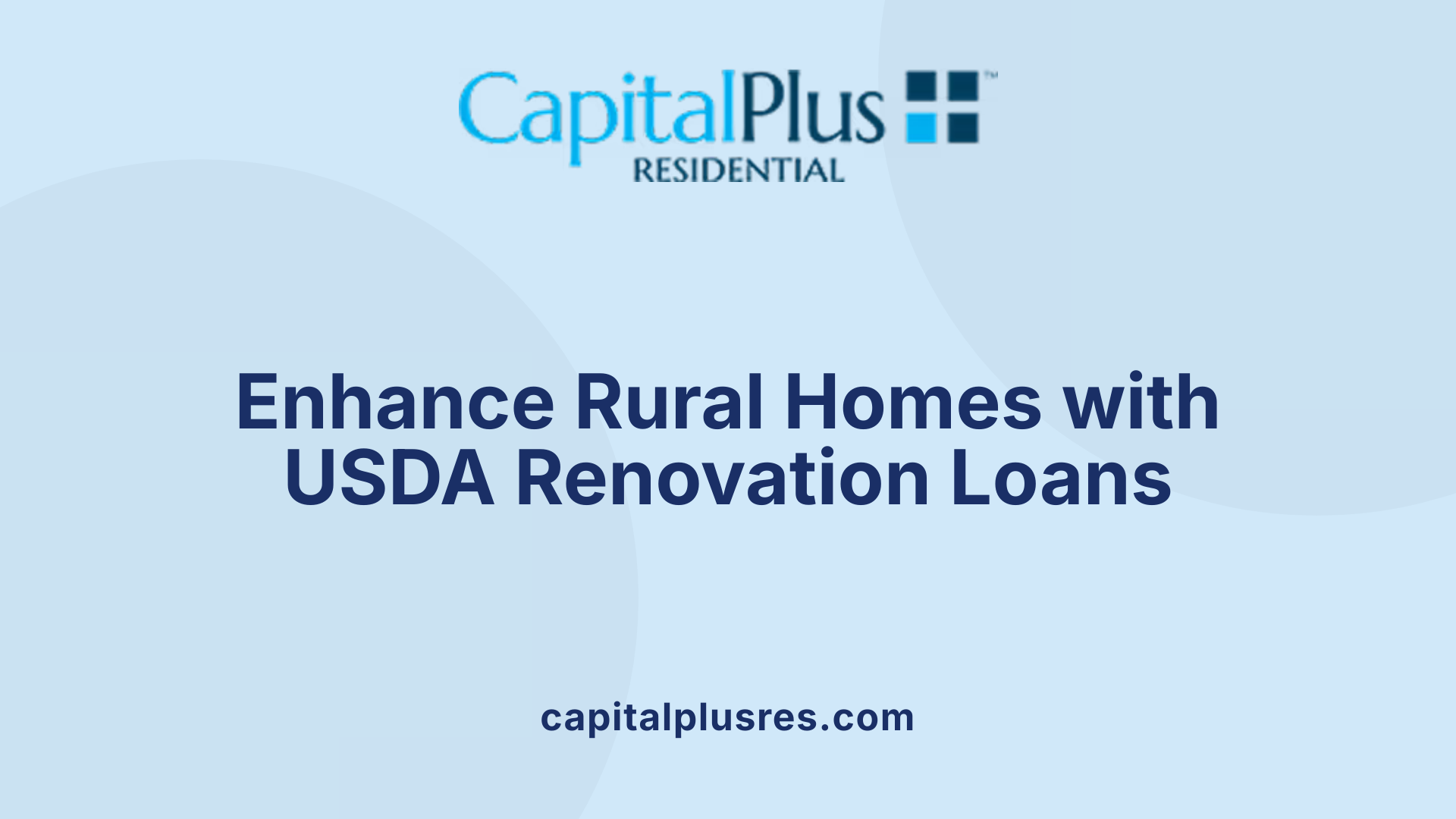
Who is Eligible for USDA Renovation Loans?
USDA renovation loans are specifically designed for rural and low-income applicants. These loans provide an opportunity for families in less urbanized areas to improve their homes without the heavy financial burdens typical of many other loan types.
What Are the Financial Benefits of These Loans?
One of the most attractive features of USDA renovation loans is that they require no down payment. Additionally, renovation costs are capped at $40,000, helping borrowers manage their upgrade expenses without excessive debt.
What Can USDA Renovation Loans Fund?
These loans can be used not just for general home improvements but also for critical energy efficiency upgrades and necessary adaptations for disabilities. This ensures that homes are more comfortable, accessible, and cost-effective to maintain for residents with specific needs.
This targeted financial support helps rural homeowners enhance their properties, making USDA renovation loans an essential resource for improving quality of life in rural communities.
Pros and Cons of Financing a Fixer Upper with Renovation Loans
What are the advantages of using renovation loans for fixer-uppers?
Financing a fixer-upper with a renovation loan comes with several appealing benefits. First, purchasers often enjoy a lower purchase price since these homes are typically sold as-is, sometimes at below market value. Renovation loans such as the Fannie Mae HomeStyle and FHA 203(k) allow homebuyers to roll both the purchase and renovation costs into a single mortgage, simplifying financing and reducing out-of-pocket expenses upfront.
Another advantage is the potential for significant home equity growth. By customizing and improving a property through renovations, homeowners can increase market value, which may translate into greater financial gain in the future. Additionally, the market for fixer-uppers tends to be less competitive, giving buyers more negotiating power and options. Many renovation loans also offer low down payment options and flexible credit requirements, making them accessible to a broad range of borrowers.
What challenges should buyers consider when financing fixer-uppers?
Despite these benefits, there are some challenges to keep in mind. Renovation loans often come with stricter requirements than traditional mortgages, such as detailed documentation—purchase agreements, repair estimates, and inspections are all needed to qualify. The application and approval process can be longer due to the construction aspect and inspections involved.
Cost overruns and unexpected repair issues represent another risk. Buyers might encounter surprises that inflate renovation budgets beyond estimates, potentially necessitating additional cash reserves. Borrowers should also prepare for the possibility of delays in moving in, as construction may extend beyond initial schedules. Moreover, managing contractors and ensuring the renovation is completed to standard adds complexity to the process.
Why are budgeting and inspections essential?
Careful budgeting is critical to successfully managing renovation projects and avoiding financial strain. Accurate repair cost estimates help set realistic expectations and prevent surprises. Pre-purchase inspections inform buyers about the home’s condition and any major repairs needed, influencing renovation planning and loan application.
Regular inspections during construction are equally important to ensure progress and quality control. These steps collectively safeguard the investment and increase the likelihood of a smooth project completion, ultimately contributing to the home's increased value and livability.
Planning Your Fixer Upper Purchase and Renovation Financing Journey
What Are the Steps From Researching Loan Options to Moving In?
Buying a fixer-upper involves several essential steps. Start by researching available renovation loan types like Fannie Mae HomeStyle, FHA 203(k), or VA renovation loans to find what suits your situation. After this, get preapproved to understand your budget better. House shopping comes next, focusing on properties that fit your renovation goals.
Once a home is under contract, inspections and detailed repair estimates are crucial to create an accurate budget. Planning your renovation with contractors and designers ensures the improvements are practical and add value. Following loan application and appraisal, closing the loan combines purchase and renovation financing.
During construction, managing draws—the staged distribution of funds—is vital to keep the project on track. Finally, after renovations, moving in completes the journey.
How Do You Work With Real Estate Agents and Inspectors?
Partnering with a real estate agent experienced in fixer-uppers can help you navigate property selection and negotiation. Agents can connect you with trustworthy inspectors who will assess structural, electrical, and plumbing issues.
Inspection results help you understand repair needs and negotiate price adjustments or contingencies. Working cooperatively with your agent and inspectors improves your chances of a successful purchase and renovation.
How to Manage Construction and Draw Disbursements?
During renovation, lenders release funds in stages called draws, tied to completion of agreed milestones. It's important to coordinate with your contractor and lender to ensure inspections validate work before draws are approved.
Detailed documentation and timely communication help avoid delays in funding, keeping the renovation schedule on track and within budget.
What Are the Benefits of Using Mortgage Brokerage Services?
Mortgage brokers provide access to multiple loan programs, including exclusive renovation options that you might miss going directly to a lender. They save you time by managing paperwork and offering market insight, helping you avoid common pitfalls. These professionals can negotiate better loan terms tailored to your unique renovation project.
How Can Borrowers Choose the Right Residential Lending Service?
Compare offers from several lenders, looking closely at interest rates, fees, and loan conditions. Consider how each aligns with your credit profile and renovation budget. Consulting with mortgage experts can clarify which loan fits your needs and ensures financing supports both purchase and improvement phases effectively.
Making Renovation Dreams a Reality
Specialized mortgage products designed for fixer uppers empower homebuyers to combine home purchase and renovation costs, simplifying financing and unlocking property potential. Understanding the spectrum of available renovation loans, from conventional offerings like the Fannie Mae HomeStyle to government-backed FHA, VA, and USDA options, helps borrowers select solutions tailored to their unique circumstances. Partnering with knowledgeable mortgage brokers and residential lenders can demystify complex processes, expedite approvals, and optimize loan terms. While renovation financing presents challenges, careful planning, budgeting, and choosing the right loan can transform a fixer upper into a rewarding home investment with lasting value.
References
Latest Blog


Get Pre-Approved Today
Start your secure online application now so you can get pre-approved for a mortgage (and close on your dream home) quickly within 5 minutes.

